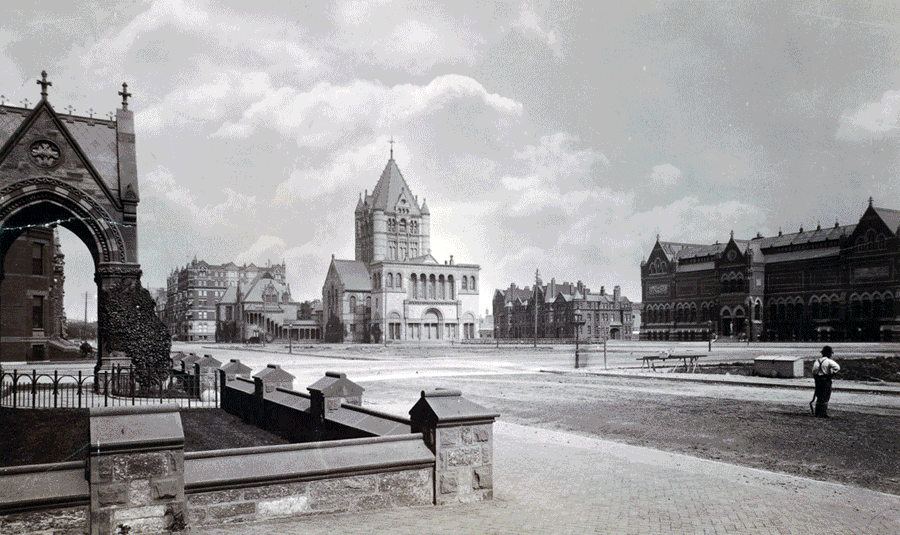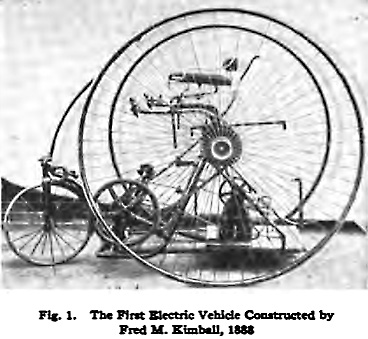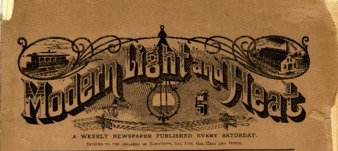Eat your heart out Elon Musk. The first American to build an electric vehicle (EV) was Philip W. Pratt, way back in 1888.
That was way before Elon’s grandfather came into this world (1902). Not to get too far off track, but it was Elon’s great grandfather, John Elon Haldeman, who was alive at that time. He was eleven years old, living in Minnesota, far from Boston.
It was in the cradle of Liberty, Boston, Massachusetts, where the first U.S. electrical vehicle took its first ride. The 20-volt vehicle did not have an autopilot feature. It didn’t even have four wheels.
Pratt’s World

Boston 1888 v Now | theatlantic.com
To appreciate what it took to build an electric car in 1888, one has to realize that there were no standards.
It wasn’t like engineers of the day could run down the hardware store to buy any of the parts we know of today, spark plugs, belts, filters, and of that. Every aspect of the car, one had to manufacture except maybe the wheels.
At the time, bicycles were popular. This was a good thing for roadways and the nascent horseless carriages. The other and more prevalent mode of transportation on the road was the horse.
Of the cars on the road at the time, there were few, but mostly steam versions in 1888. When horses came upon those noisy beasts, they were apt to run or otherwise freak out.
Most drivers would turn off their engines when crossing a horse, a pain in the rear considering the car might not start again.
Pratt’s Trike
Whether or not it was a car is debatable. At the time, many horseless carriages had only three wheels.
The car most historians consider the first viable car, the Benz Motorwagen, was also three wheels. Three were easier to balance and navigate the crummy roads of the time, so Pratt went with easy.
Pratt designed his EV, but he had another man build it, Fred M. Kimball. Some accounts call it the Kimball trike, but it was Pratt’s engineering.
The wheels of his EV were massive, almost as tall the rider in the seat of the vehicle. The third wheel rode in front, and the engine sat below the driver.
It had 10 lead-acid batteries powering the 0.5 horsepower motor, which drove the wheels via a chain. Pratt’s trike could go a whole eight mph. The low speed was due, in part, to the trike’s 300-pound scale weight.
Pratt’s Legacy
Philip Pratt never bothered to patent his idea.
Other than a small circle of people who knew about it in Boston at the time, it appeared in one periodical of the time, the Boston Modern Light and Heat magazine.
Pratt had invited the editor to ride in his creation that July day. By the August issue of the magazine, they had a review of the experience.
The folks at Modern Light and Heat weren’t aware of the historical value of that event. Their article had no images or other information about Pratt’s creation. Without that article, though, Pratt’s invention may have never made it out of 1888.
Reportedly, Pratt’s EV made the rounds in New York and Atlantic City before his death in 1915, then that was it. Other, better cars took the stage.
We all know what happened to the story of electric vehicles in the early 20th-century. It would be another century before electricity would get its moment in the sun again, but Pratt gets the gold for being the first to make it happen in the United States.
Sources: wired.com, notorc.blogspot.com



